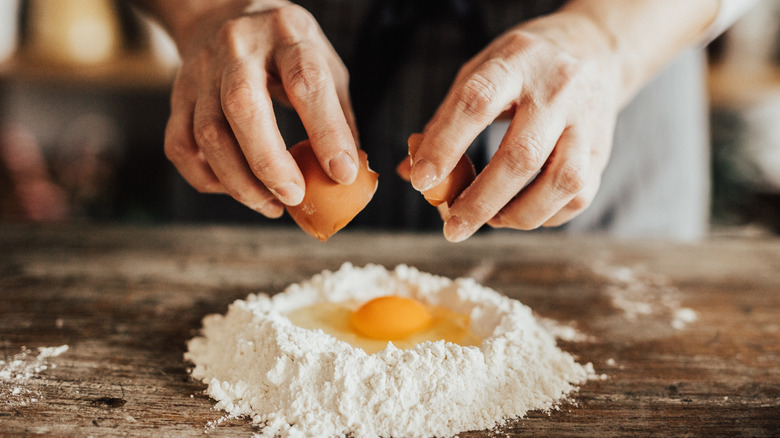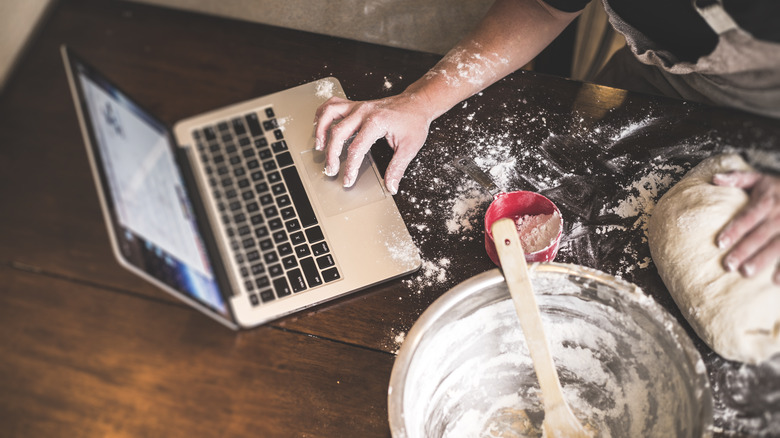The Percentages You Need To Understand For Better Baking
If there's one thing you never want to mess up while baking, it's measuring. Cooking may allow you some wiggle room to tweak and experiment on the fly, but baking does not. If you want a foolproof method to perfectly portion out the ingredients going into a dough without any missteps, it's time to learn how to use the baker's percentage.
While it might sound a little intimidating to those who aren't mathematically inclined, the baker's percentage is, thankfully, not some sort of golden ratio or complex formula that you need to memorize. It's just a mathematically versatile way of thinking about ingredients that'll improve and expedite your baking efforts in the long run. And, while it might sound complicated on paper, it's actually quite a simple and intuitive framework once you grasp the basics.
All you're doing is using the total amount of flour in your dough as your reference point for 100% as it relates to all of your other ingredients. If you're using 100 grams of flour, 20% is 20 grams. If you're using 150 grams of flour, 20% is 30 grams. So, instead of thinking about other ingredients in terms of teaspoons or cups, you're thinking about them in percentages relative to how much flour you're using. This is the basis for how hydration is measured in bread dough: If you're planning on making a 75% hydration loaf, that means you're adding enough water to equal 75% of the amount of flour you're using.
Why use the baker's percentage?
If you've ever found yourself tediously converting a recipe's measurements into smaller or larger portions, you've probably already guessed why the baker's percentage is a handy framework to have. Once you've converted a baking recipe into percentages, it's a breeze to calculate and properly adjust the ingredient measurements on the fly. The fact that it's all relative to the flour also means that you will avoid adding too much flour to your dough. All you have to do is take the weight of the flour and multiply it by each ingredient's percentage moved two decimal places. For example, if you want to add 3% salt to 178 grams of flour, you'd be multiplying 178 by 0.03 to get 5.34 grams of salt.
While the baker's percentage does primarily apply to bread baking, making a habit of using it is a good way to improve your baking in general. interpreting recipes through percentages gives you a better point of reference to start understanding how different ingredients each affect the end product. With some time and experience, you'll be able to look at a percentage breakdown and make a very good guess as to how the dough will look, feel, and behave in the oven. By taking the guesswork out of tweaking and comparing recipes, the baker's percentage will help you become a much more consistent baker.

